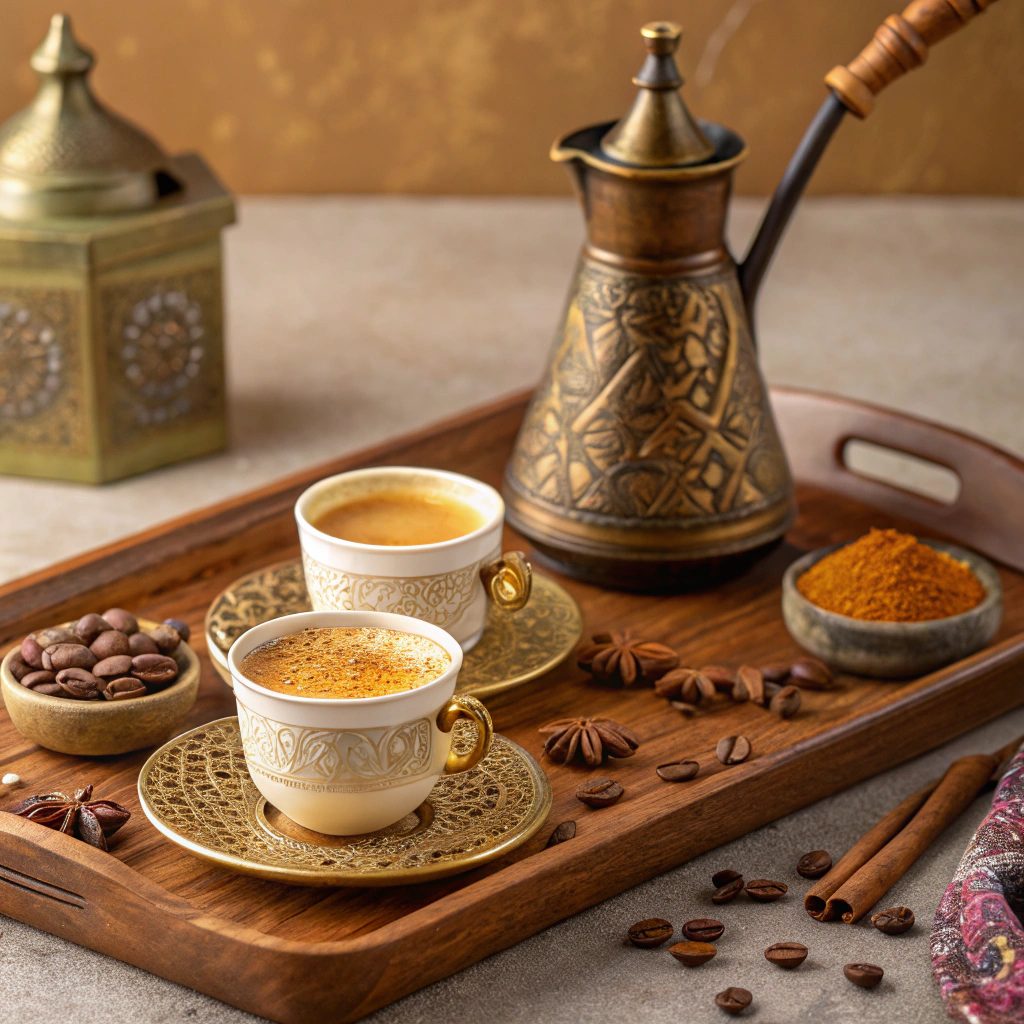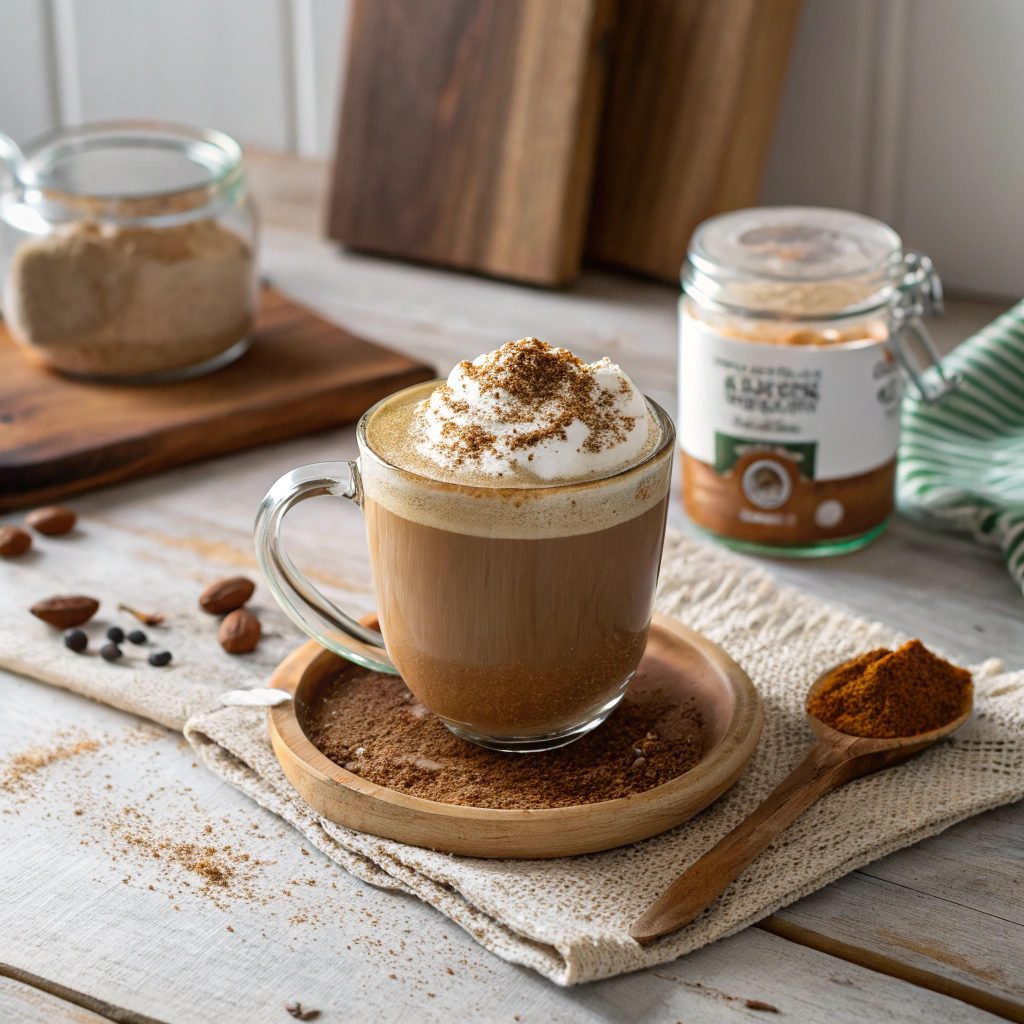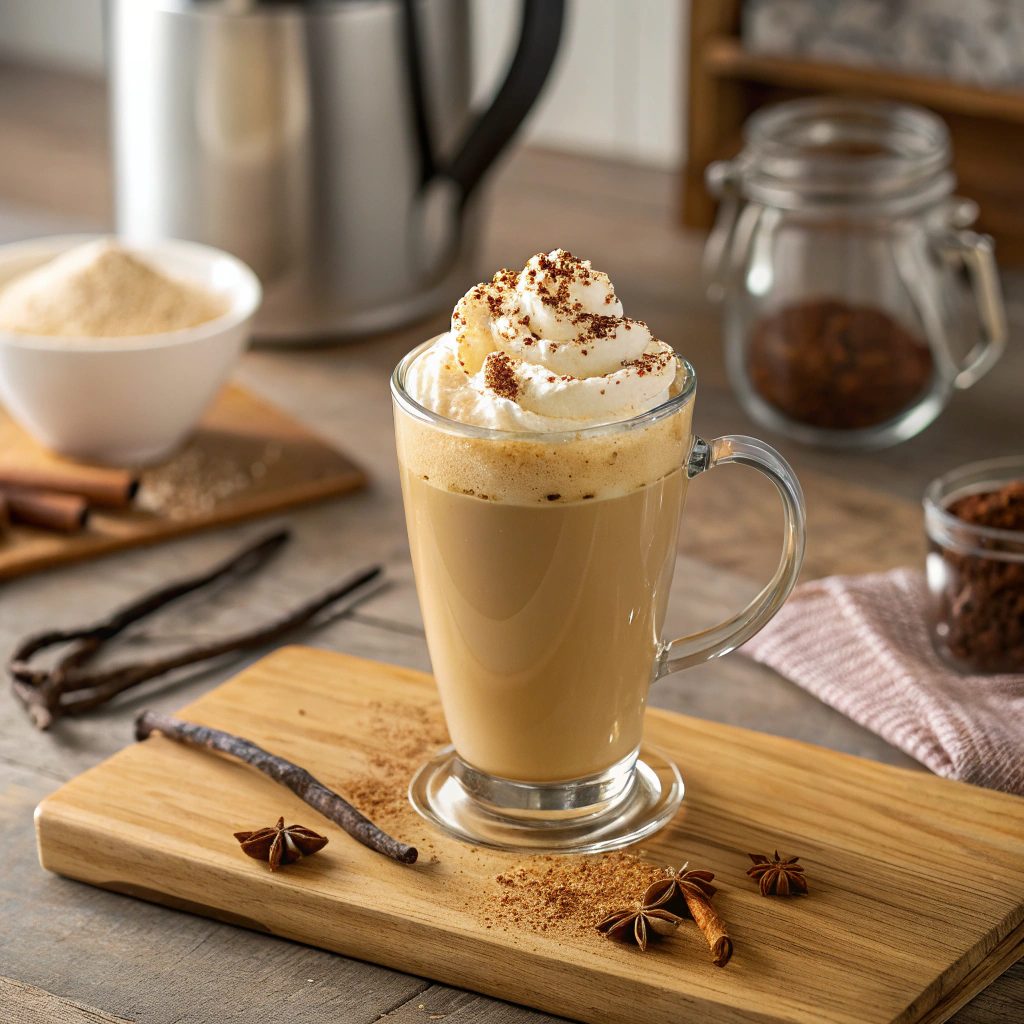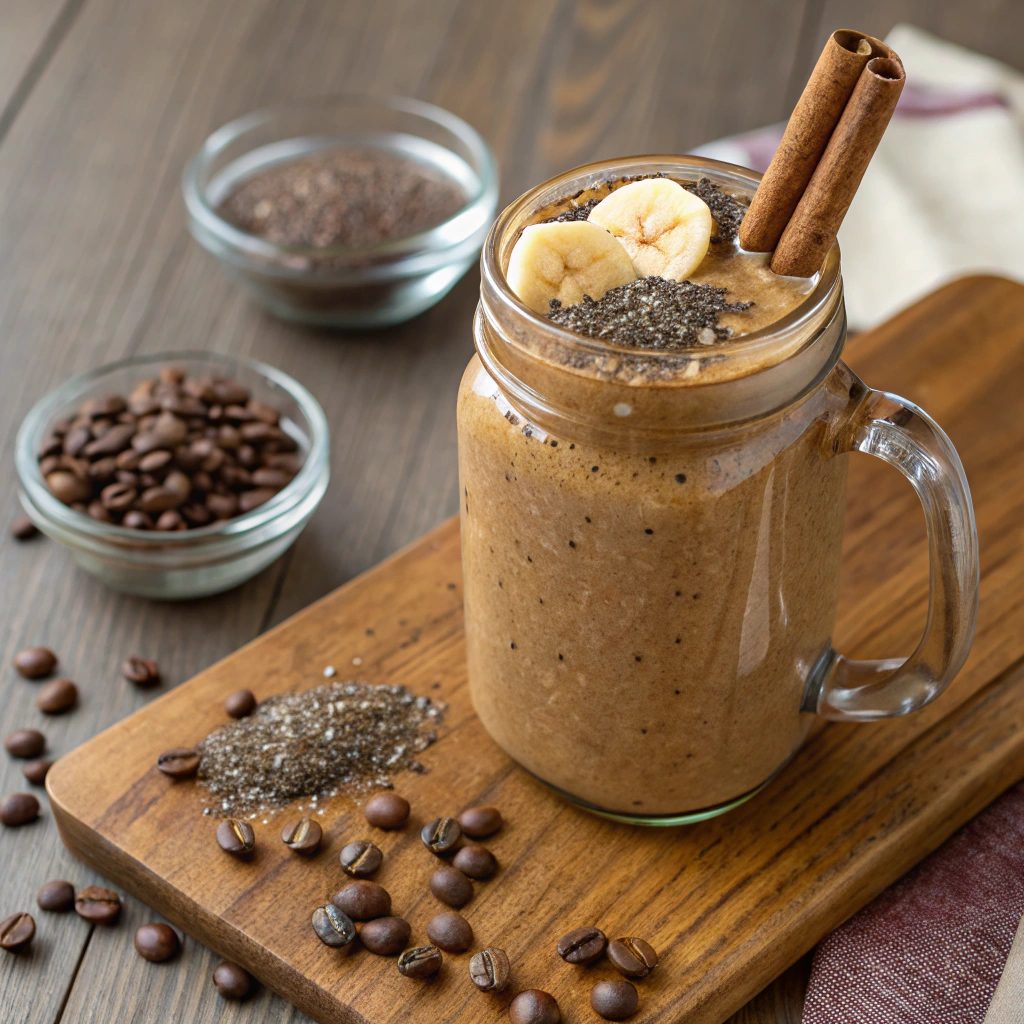Imagine a small copper pot simmering on the stove, filling the air with a warm, inviting scent. The first time I had Arabic coffee at a family event, its aroma hit me like a cozy hug. That’s qahwa coffee: a tradition that welcomes you with open arms.
Every sip of this spiced coffee has a story to tell. It’s more than a drink; it’s a sign of Middle Eastern hospitality. Making it at home is easy—just mix coffee, spices, and a bit of patience. This traditional coffee recipe shows you can make a taste of heritage without fancy tools. Are you ready to give it a try?
What Makes Qahwa Coffee So Special
Qahwa is more than a drink; it’s a story. Its qahwa history goes back centuries, tied to Middle Eastern coffee traditions. These traditions show hospitality across the region. Every cup of Saudi coffee or Emirati coffee brings warmth of shared culture and community.

The Rich History Behind This Middle Eastern Brew
Long ago, qahwa was a sign of respect. In Saudi Arabia, serving Saudi qahwa welcomed guests with open arms. The art of brewing and serving became a key part of coffee traditions.
Even today, the first pot is for honored guests. This honors the qahwa history.
Traditional Ingredients and Their Benefits
What makes Middle Eastern coffee special? It’s the qahwa ingredients. The base is lightly roasted green coffee beans. But the real magic comes from spices like cardamom coffee and saffron coffee.
Here’s why they’re important:
- Cardamom: Adds a sweet, citrusy aroma to every sip of coffee with spices.
- Saffron: Gives a golden hue and subtle floral notes.
- Cloves: Adds warmth without overpowering the blend.
Regional Variations Worth Knowing
From Saudi Arabia’s deserts to UAE gatherings, qahwa variations tell a story. Saudi qahwa often includes cardamom and saffron. Emirati coffee might add dates or rosewater.
Each Middle Eastern coffee types shows local tastes. This proves one cup can be as diverse as the region itself.
My Simple Qahwa Coffee Recipe
Traditional Qahwa Coffee is a fragrant treat anyone can brew. This qahwa recipe blends classic Middle Eastern flavors into a drinkable experience. Perfect for gatherings or a cozy morning, making qawa is simpler than you think. Let’s get started!
- ½ cup Arabic coffee beans (medium roast)
- 1 tbsp whole green cardamom pods
- 4 cups water
- 3 tbsp sugar (adjust to taste)
- Ground cinnamon or saffron for garnish (optional)
Steps:
- Grind coffee beans and cardamom together in a spice grinder until fine. This cardamom coffee recipe relies on this mix for depth.
- Boil water in a saucepan. Reduce heat to low, add the coffee-cardamom blend, and simmer uncovered for 10 minutes.
- Strain the brew through a fine sieve into a thermal jug. Stir in sugar until dissolved.
- Pour into small cups. Garnish with cinnamon sticks or a pinch of saffron for homemade Arabic coffee flair.
Recipe Details:
- Prep Time: 5 mins
- Cook Time: 15 mins
- Total Time: 20 mins
- Servings: 4-6 cups
- Cost: ~$3.50 per serving
- Calories: 50-70 per cup (sugar-dependent)
- Cuisine: Middle Eastern, Arabic
- Course: Beverage, Dessert accompaniment
Serve in a traditional jebena pot for authenticity. Adjust sugar to taste—some prefer it less sweet. Use pre-ground beans for convenience, but freshly ground beans enhance aroma. This qahwa recipe works with or without added spices. Enjoy your homemade Arabic coffee experience!
Serving Your Qahwa Coffee Like a Pro
Start with the right tools when sharing qahwa. Traditional coffee cups called finjans are perfect—they’re small and enhance the experience. Fill each cup only one-third full, following qahwa serving traditions.
The host pours first, then guests, as part of Arabic coffee customs.
Etiquette is key. Always offer refills, but watch for cues. Guests might wiggle their cup to say “no more,” a common qahwa etiquette gesture. Serve elders or honored guests first, showing respect.
Pairs like dates or sweet pastries balance the coffee’s boldness. I often set out cardamom-spiced cookies—they match the spice in the brew. These snacks are a classic combo in Middle Eastern gatherings.
Feel free to mix tradition with modern touches. Use mugs if you prefer, but keep the spirit of qahwa etiquette alive. I’ve hosted friends who love the blend of old and new. The warmth of sharing qahwa stays the same, no matter the cup.

Qahwa Coffee
Ingredients
Method
- Grind coffee beans and cardamom together in a spice grinder until fine.
- Boil water in a saucepan. Reduce heat to low, then add the coffee-cardamom blend and simmer uncovered for 10 minutes.
- Strain the brew through a fine sieve into a thermal jug. Stir in sugar until dissolved.
- Pour into small cups and garnish with cinnamon sticks or a pinch of saffron for an authentic touch.



